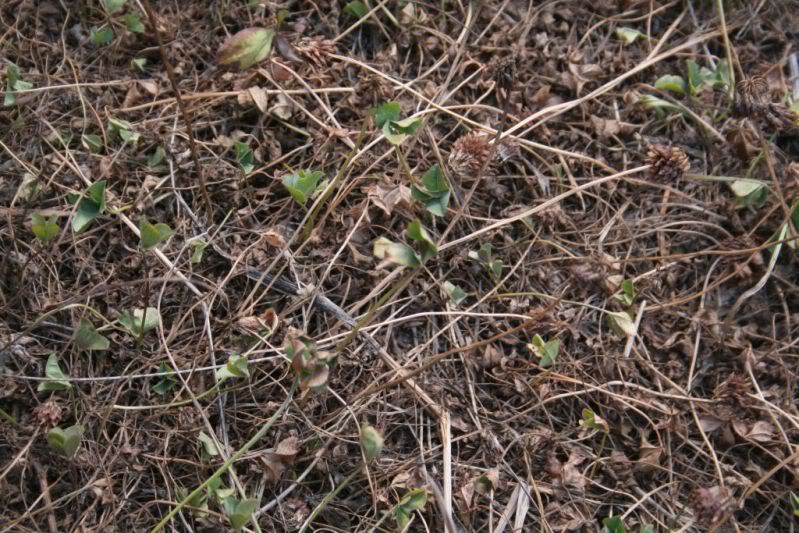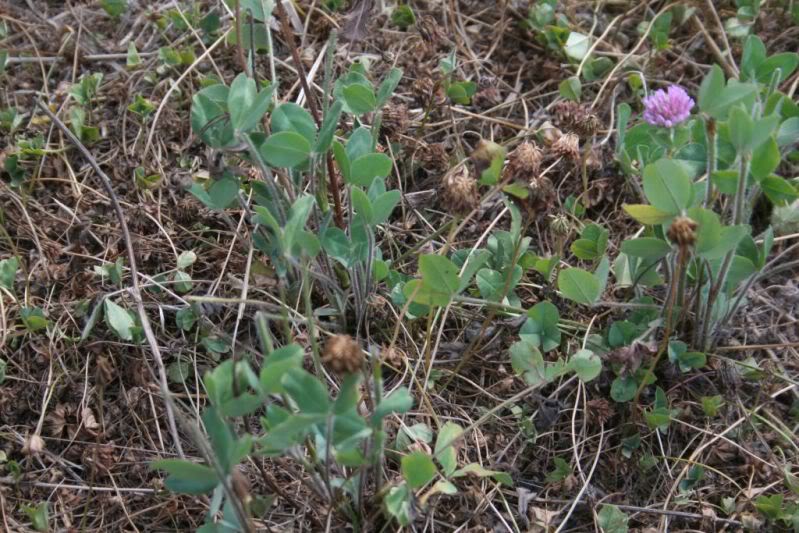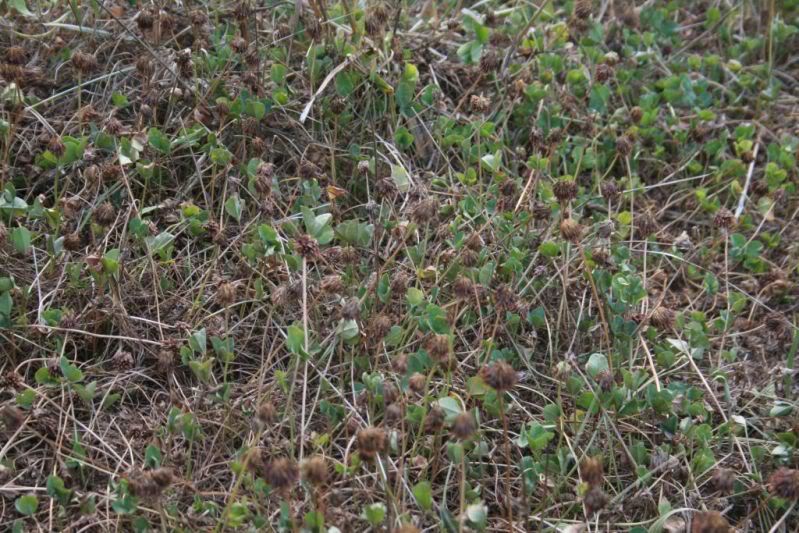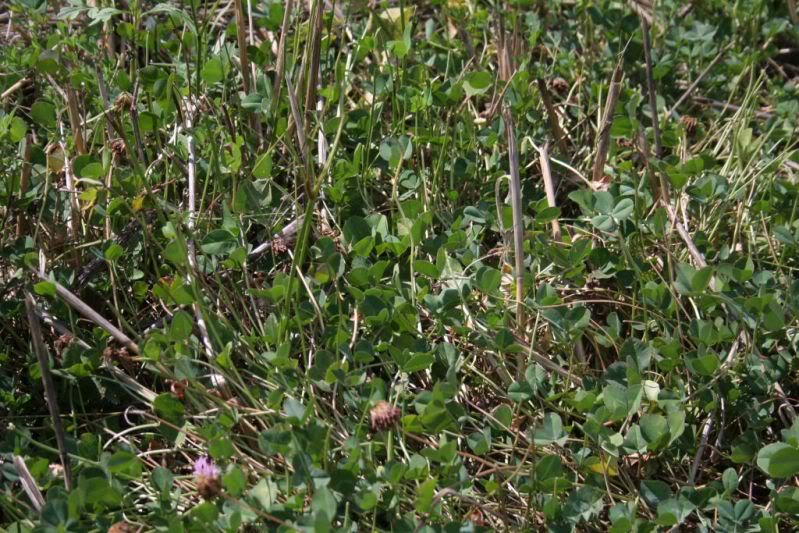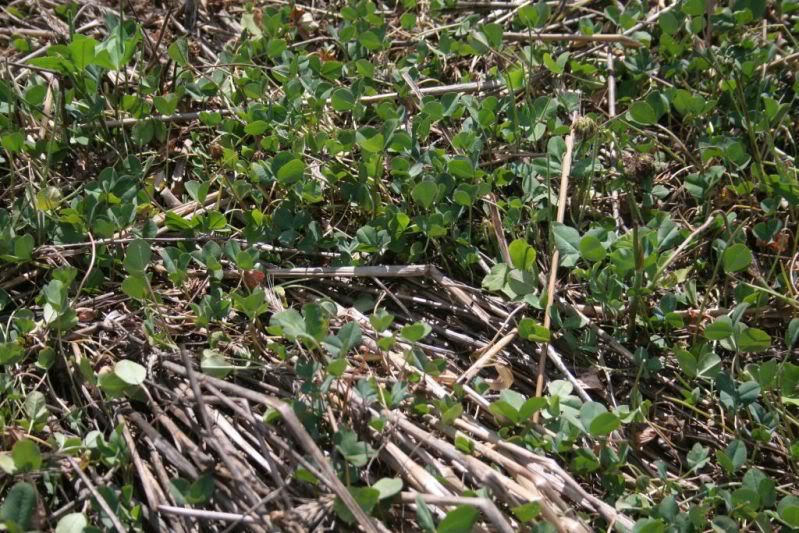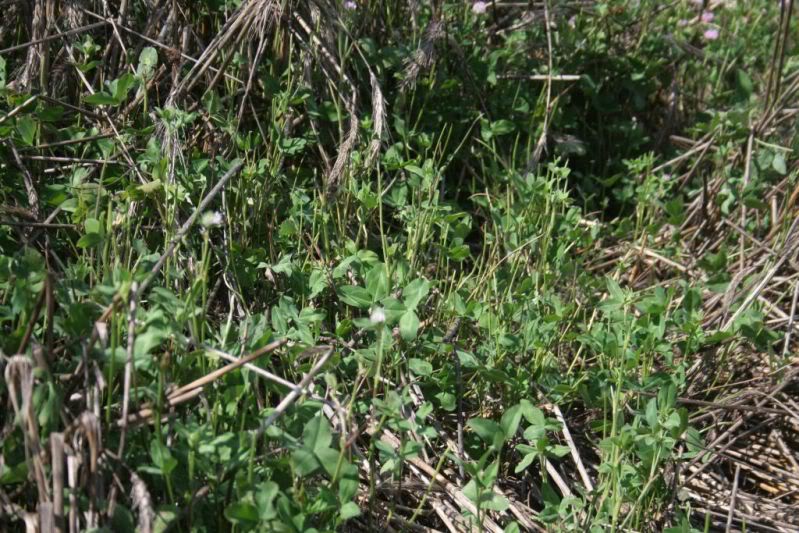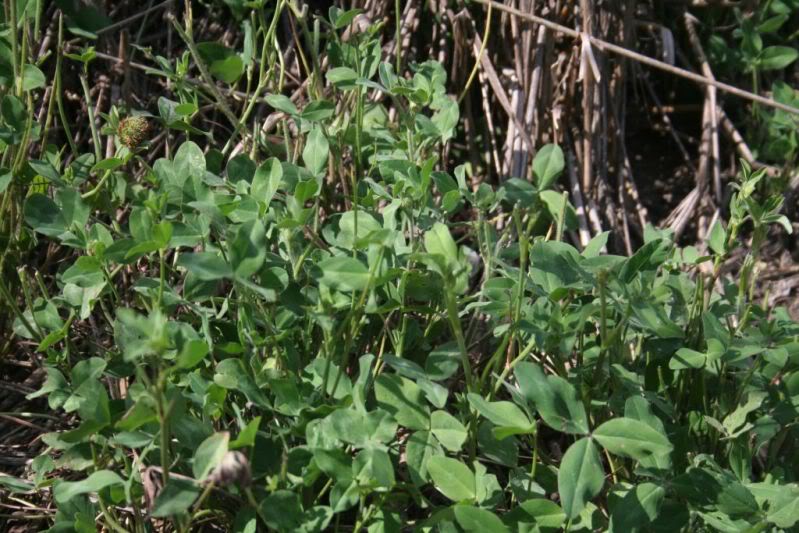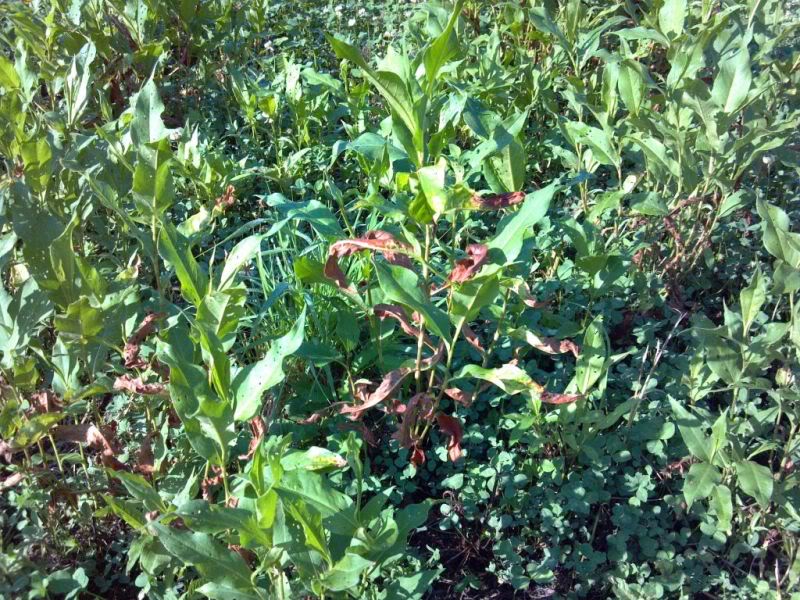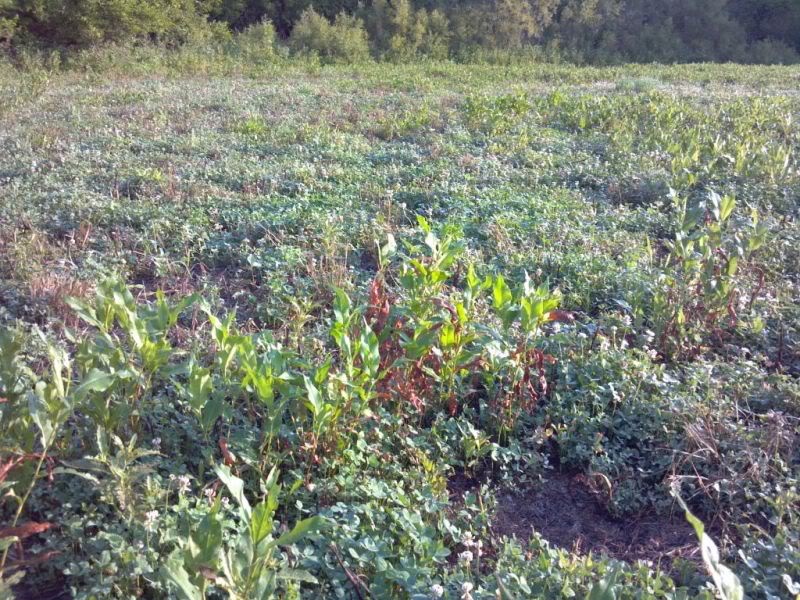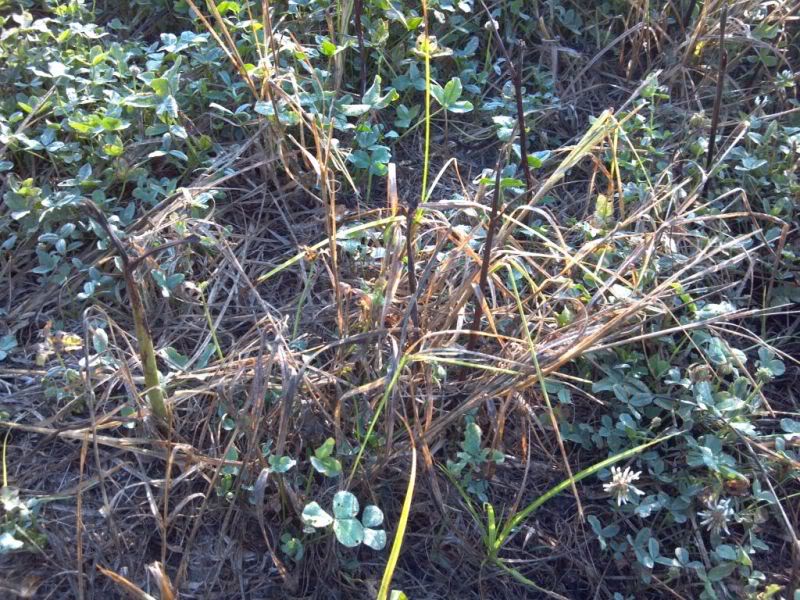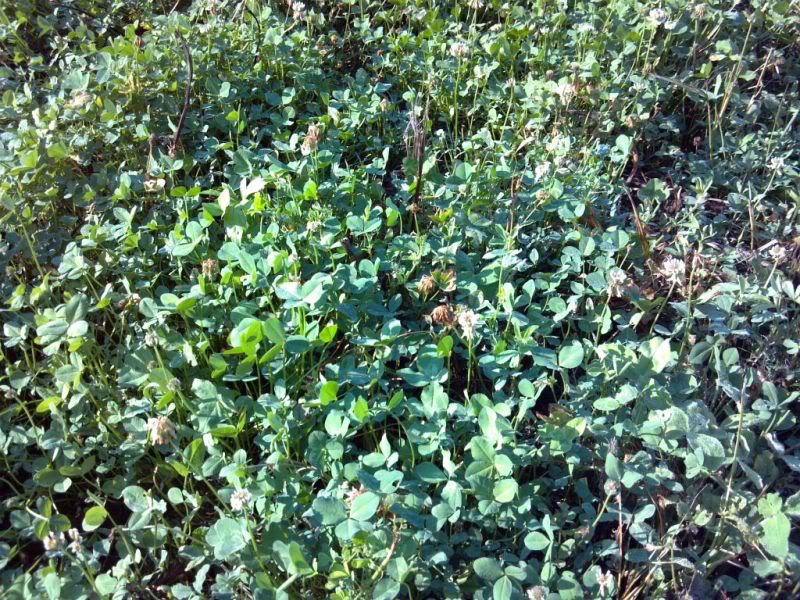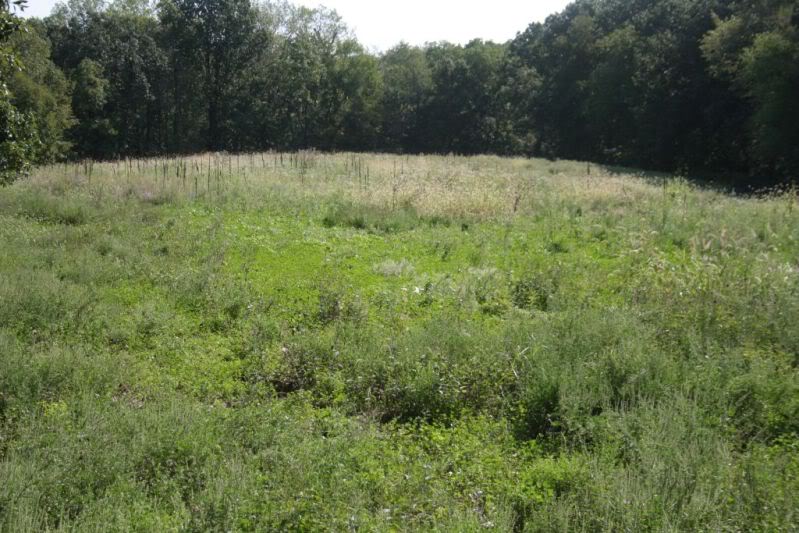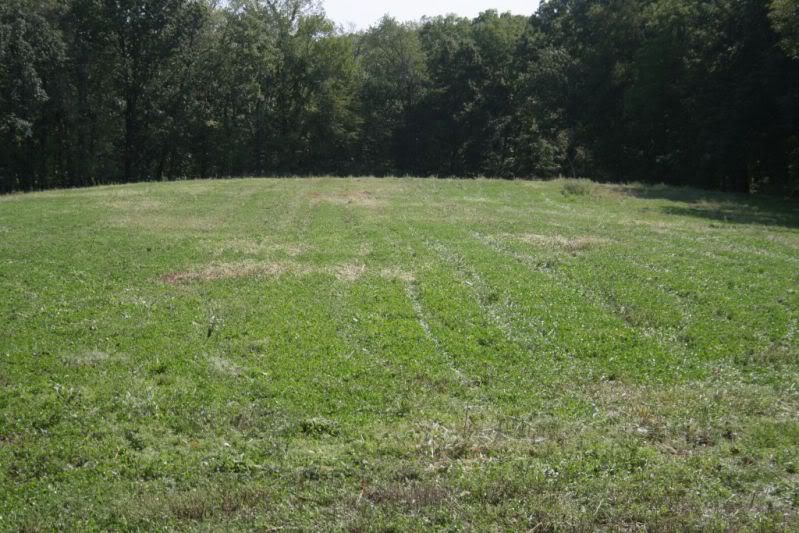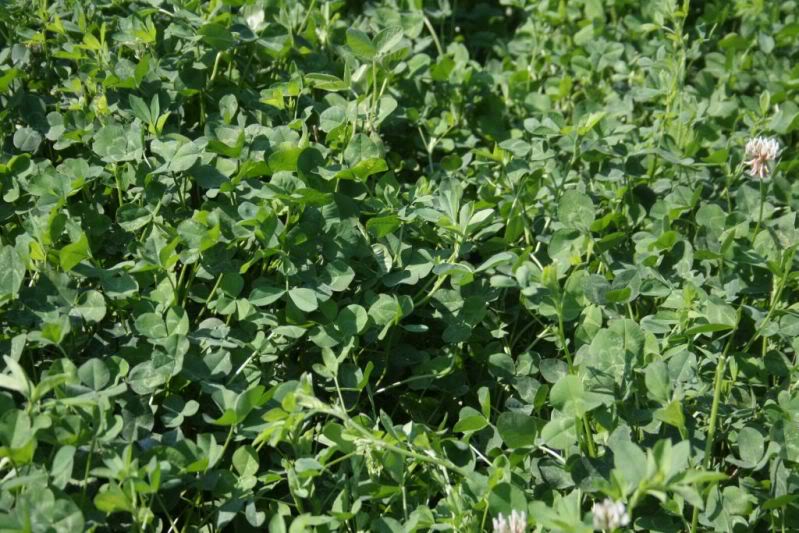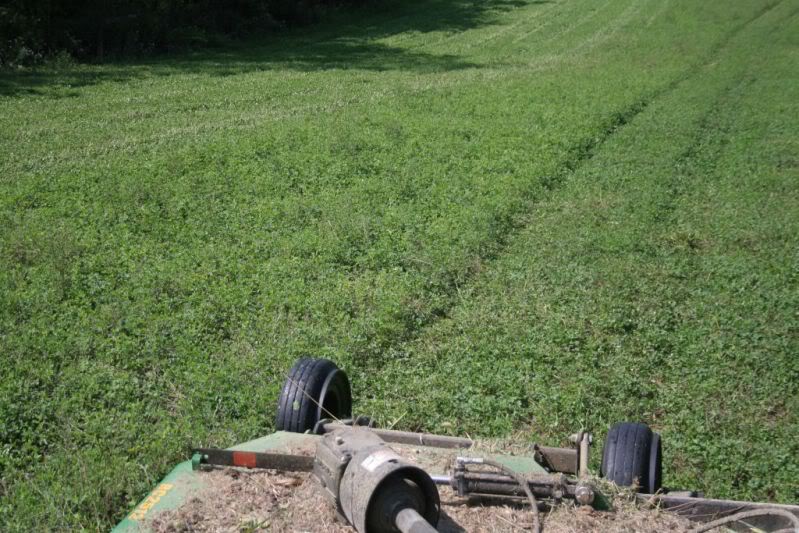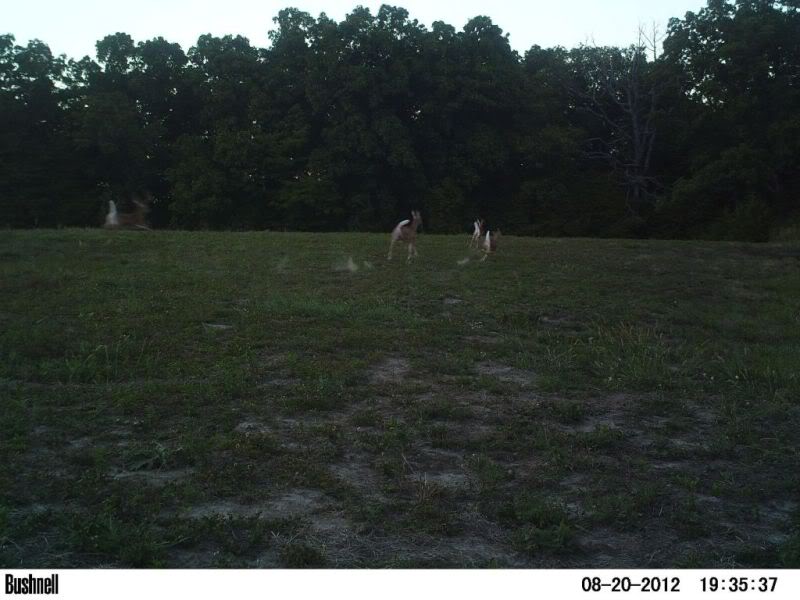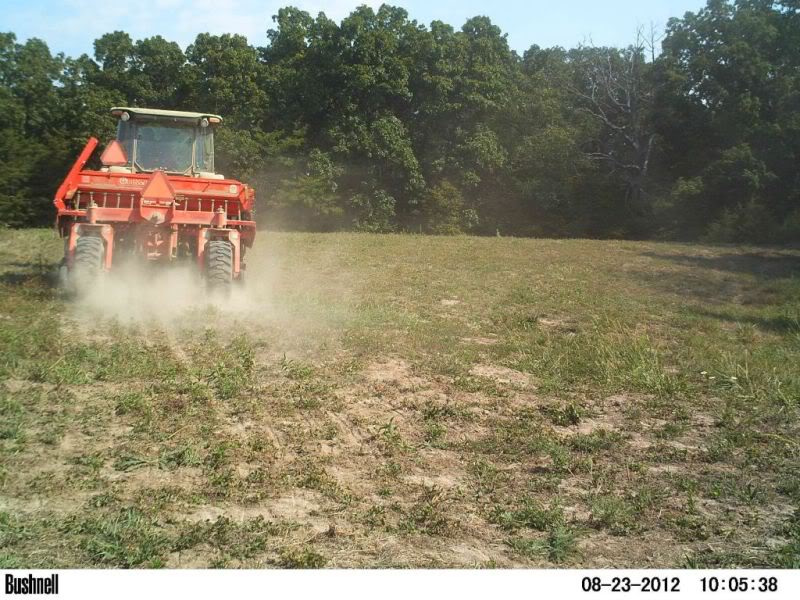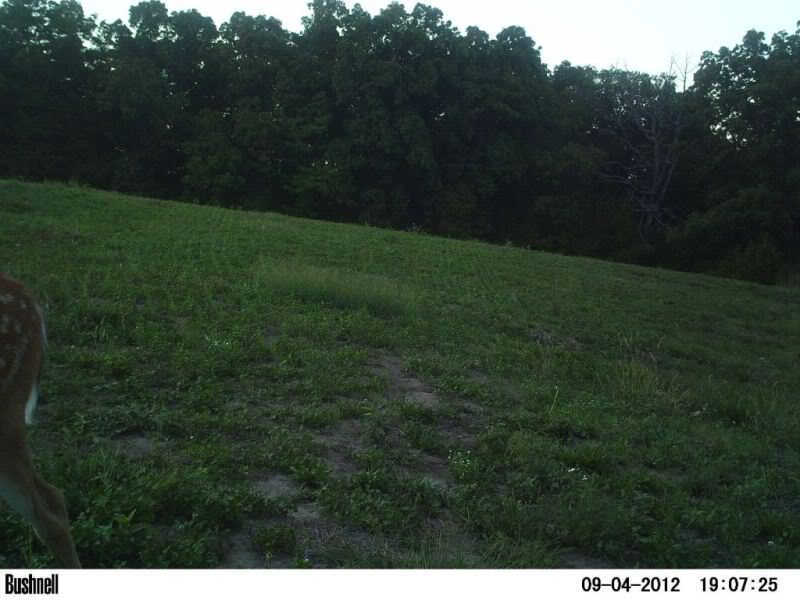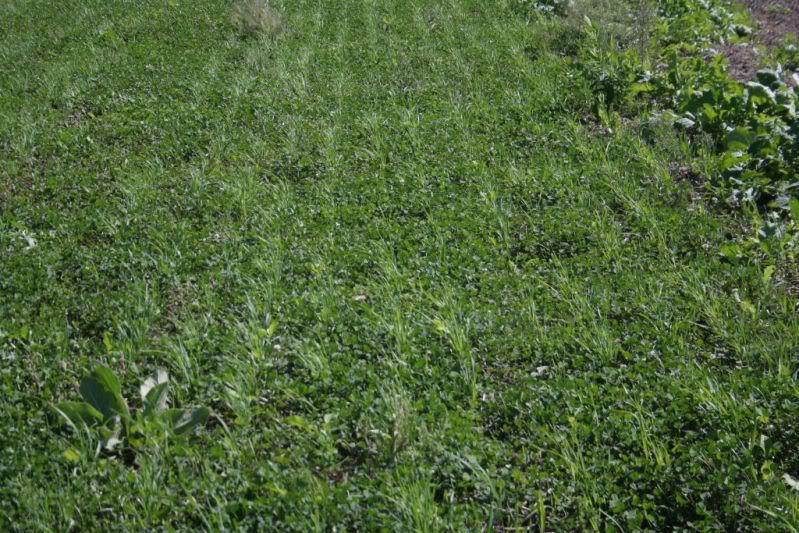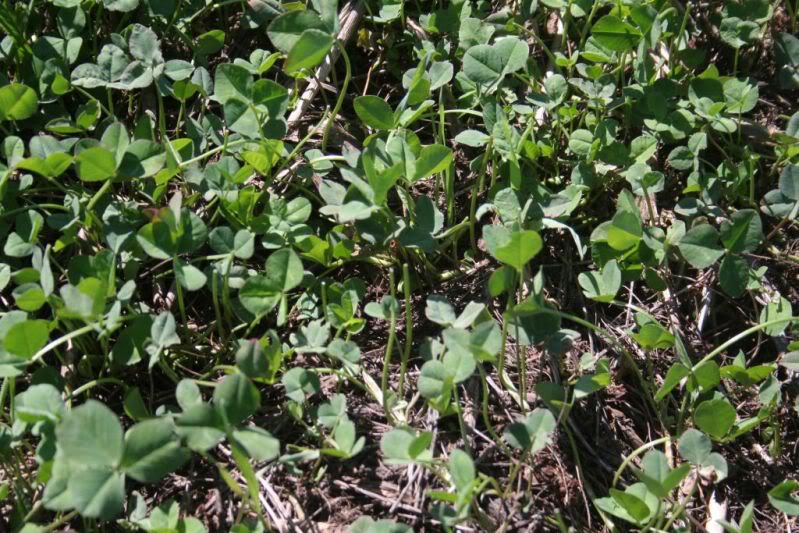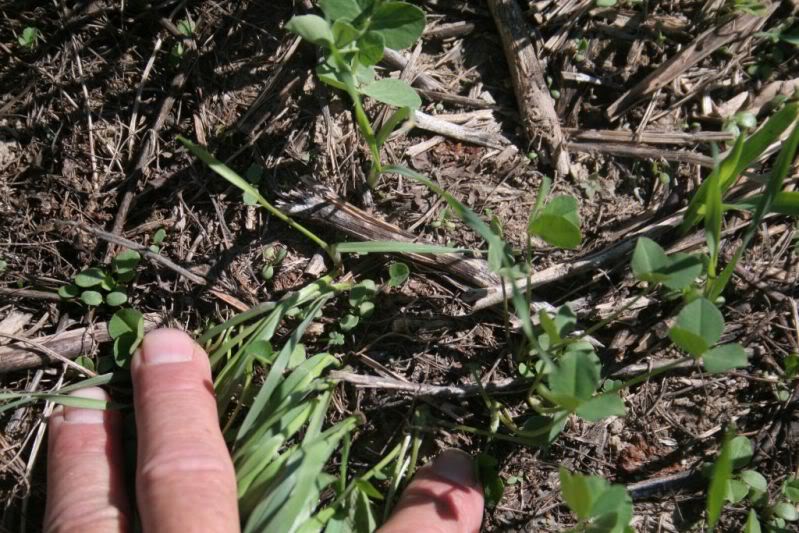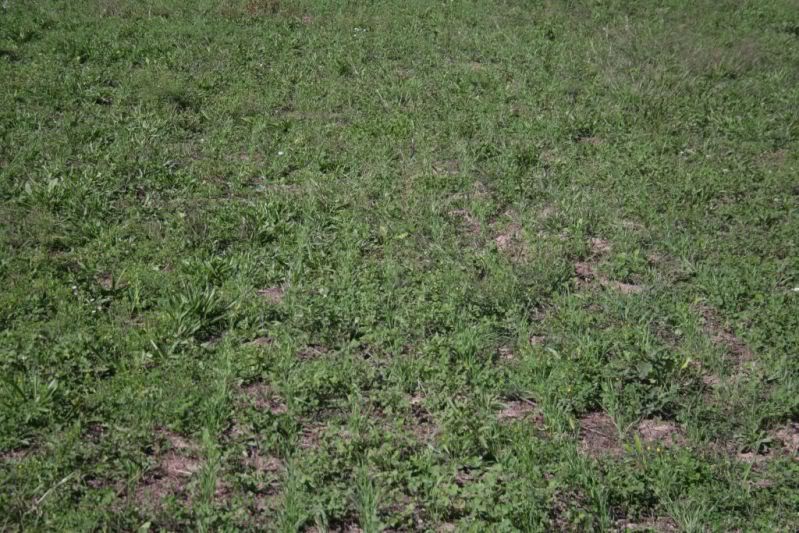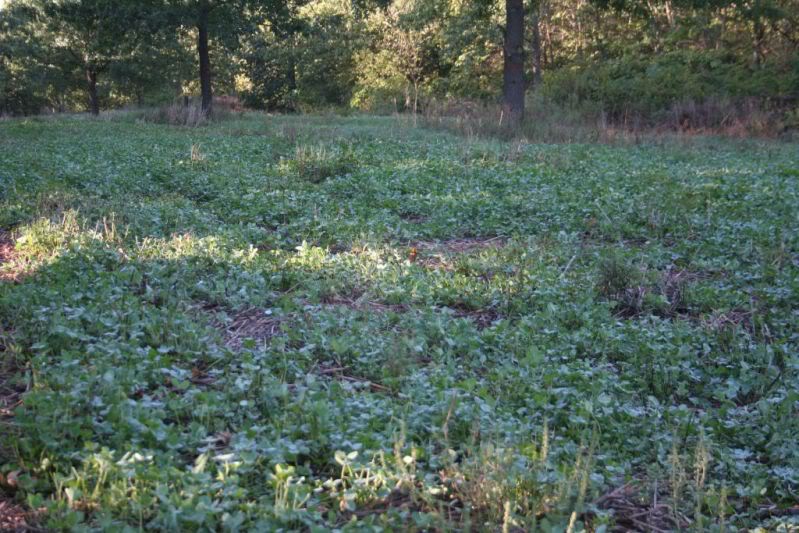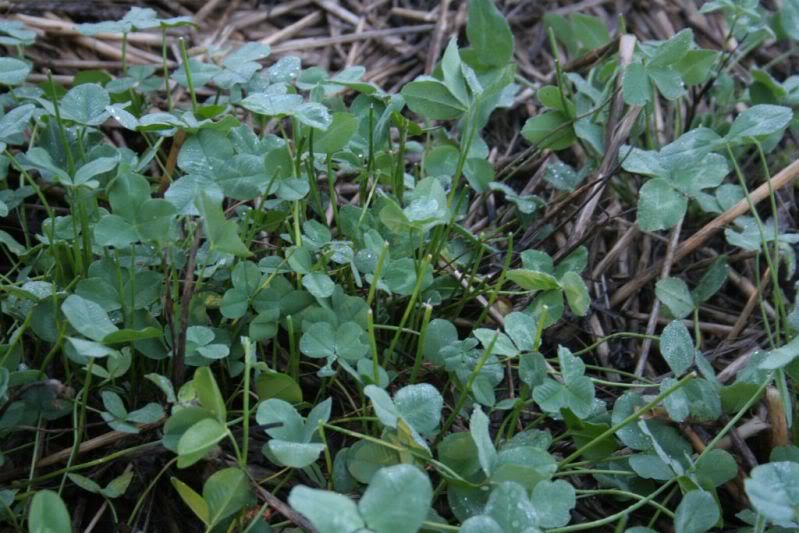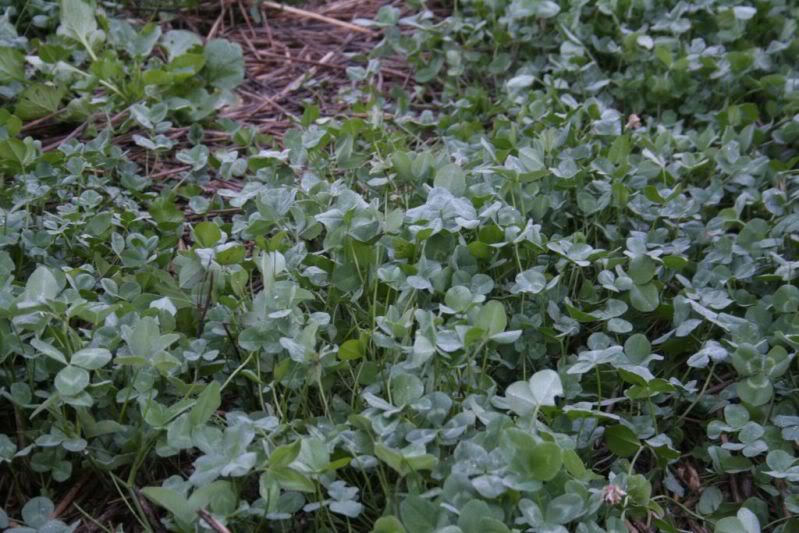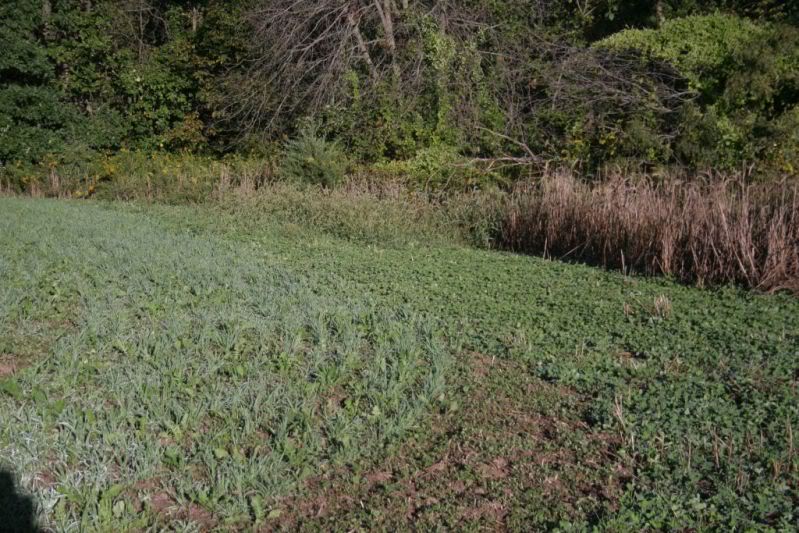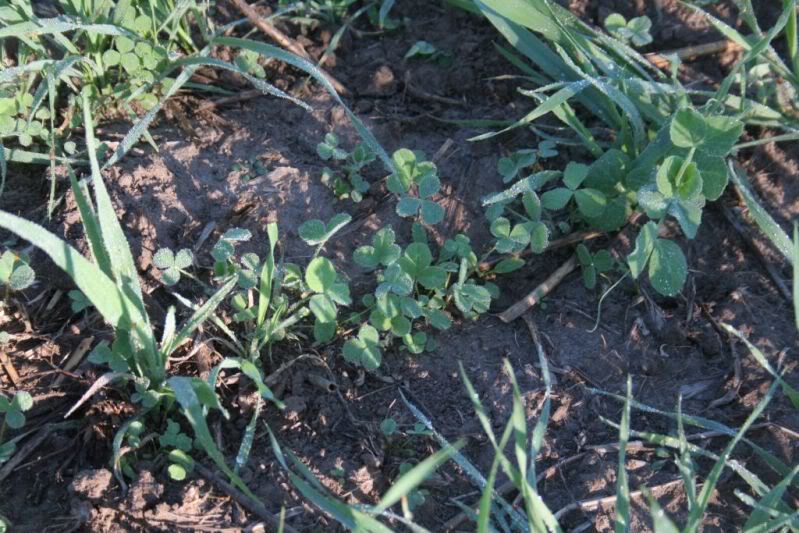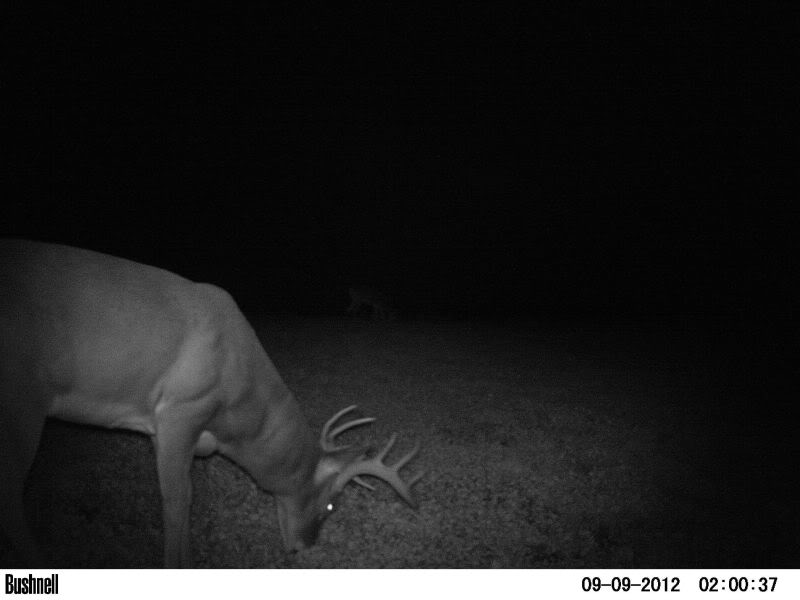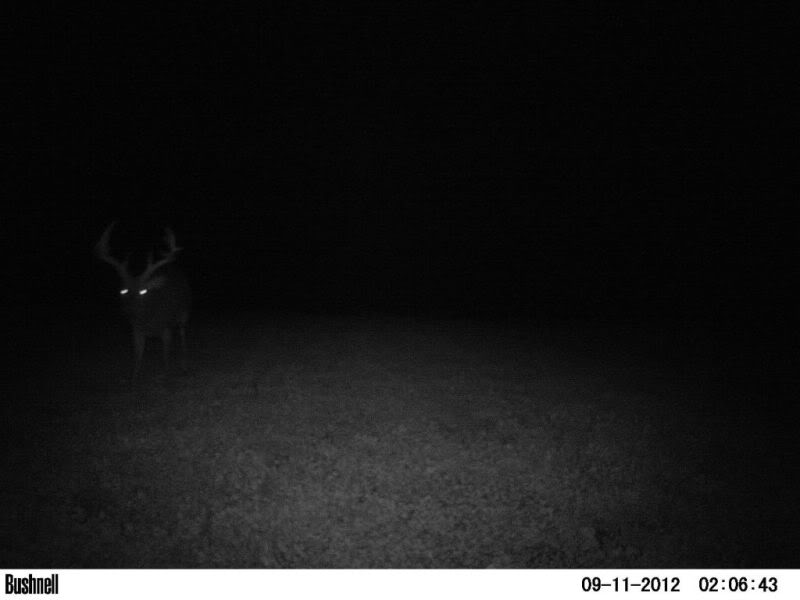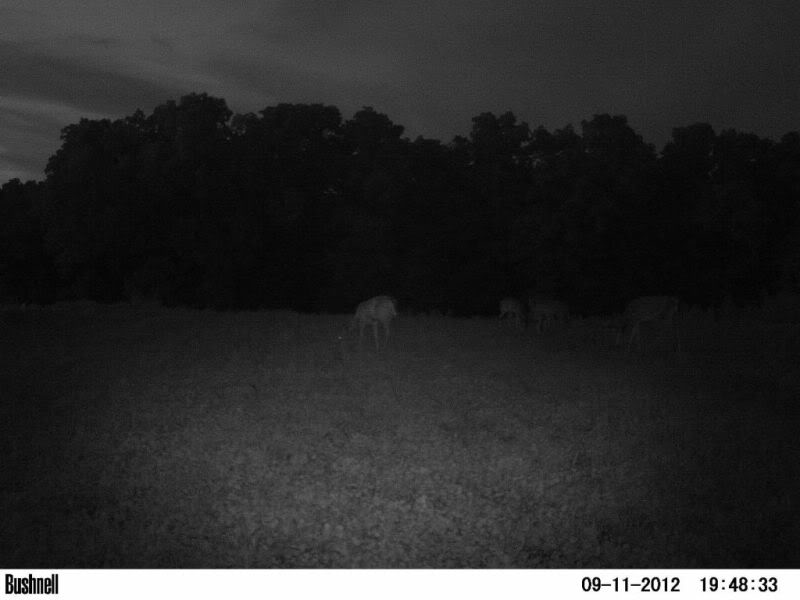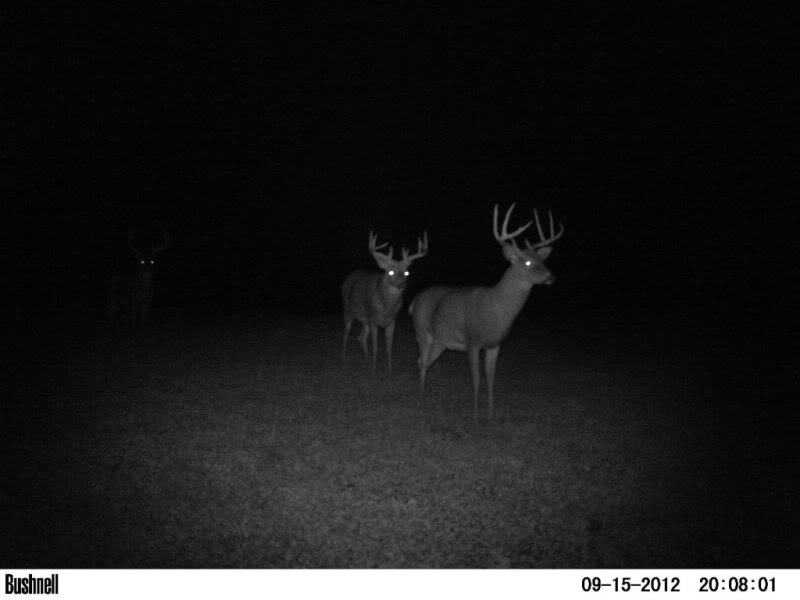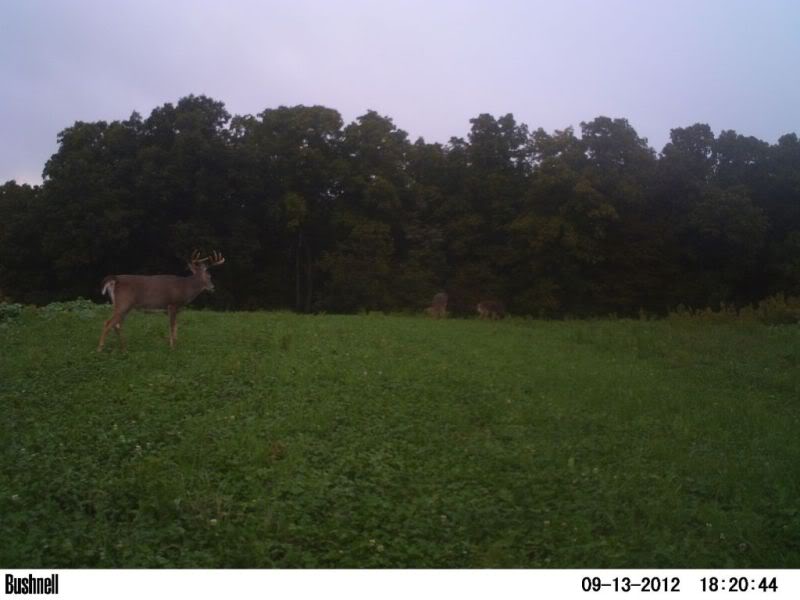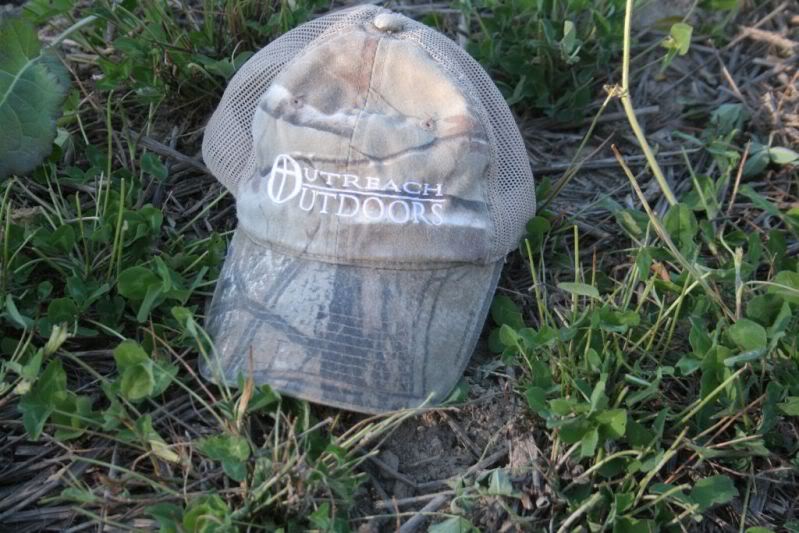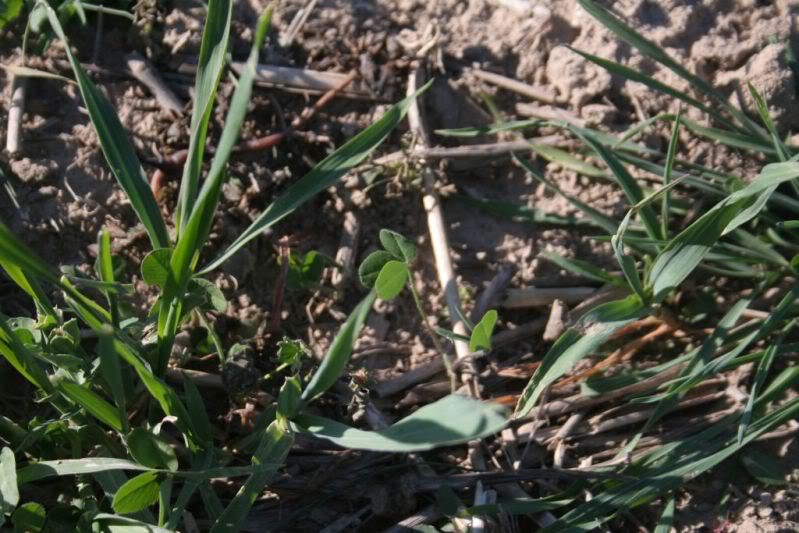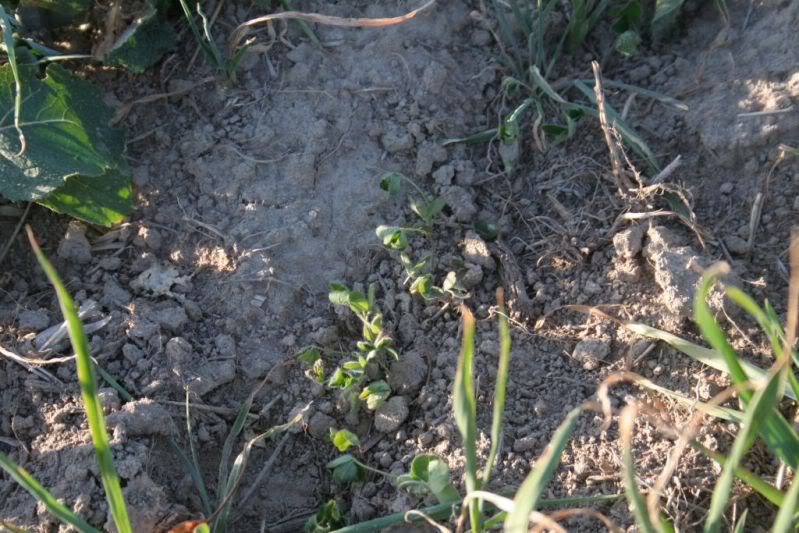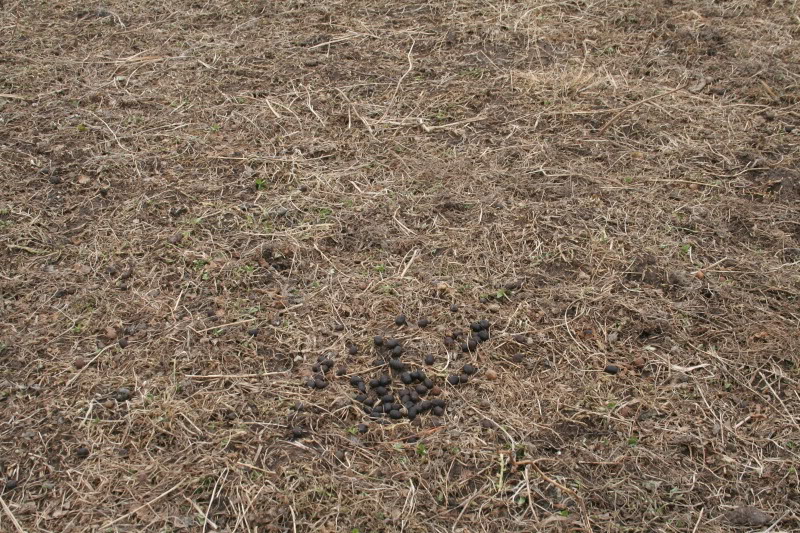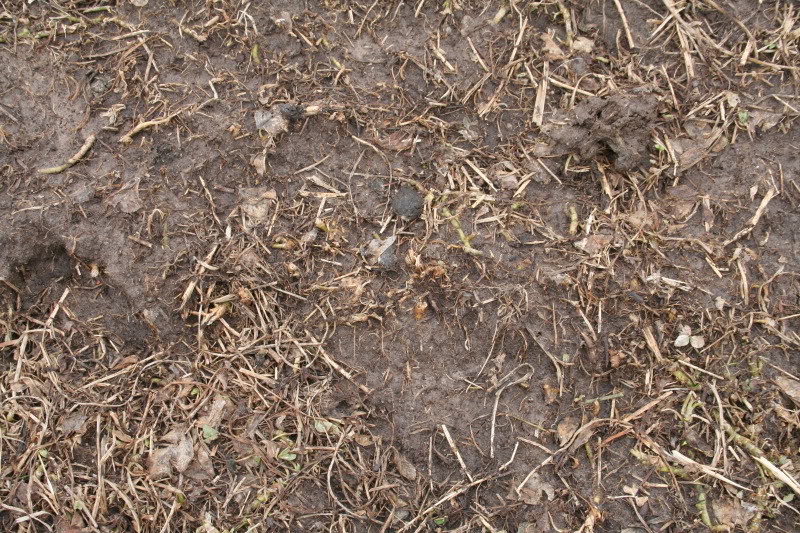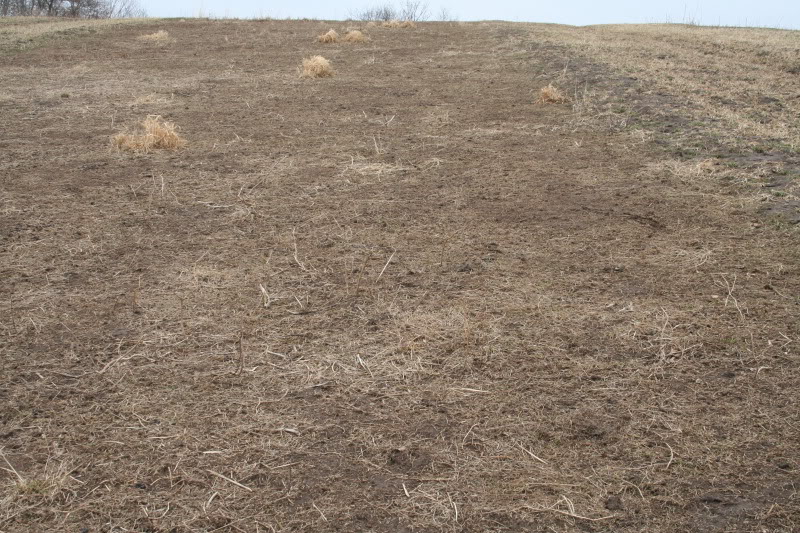September 25th, 2012
Whitetails are still hammering the white/ladino and red clover portions of our feeding areas...the more I see how heavily deer use clovers (despite having lot's of other options) the more I love this great plant!
No matter how much or what type of other food sources are available, they keep the clovers well grazed!
Hard to find a more economical yet productive food source where a little...does a lot!
We use clover alone in hidden areas, small backwoods openings, loops, trails anywhere it can get enough sunlight but we use it most to surround the perimeter of our brassica/rye strip plots...shown here along the edge next to the rye combo portion of the feeding area.
Clover in my area of the midwest will feed deer from very early spring well into January and deer quickly adapt to coming to the clover making it an important element of the year around feeding system. Clovers are easily established with the rye combo in late summer/early fall (allow 6 weeks growing time ahead of hard freezes if possible)...they get rooted in the fall, with no weeds and rarely is wet weather a problem and take off like gangbusters in the spring!
Expensive "Buck on a Bag" clovers are not drought resistant nor can they withstand heavy grazing pressure, so while they certainly can work...I recommend far better, yet less expensive, tried and true varieties of which there are many! Alice, Durana, KopuII, Jumbo Ladino, Will and a host of others make up the clover seed possibles. I have been planting Winter White and Domino white clovers lately and they also are very good clovers.
A few will comment that "deer don't eat my clover" (or beans, brassicas, rye etc.) but almost without fail...those landowners have far bigger habitat problems that include poor cover, food sources too far from cover, unscreened feeding areas, people/dog pressure and worst of all...deer using their food sources but they don't have a clue because of lack of cameras to verify usage.
To date...I have never, not once had clover go uneaten and that friends is not on my individual farms but on dozens of farms across Iowa and Missouri for which I am personally responsible not to mention the hundreds more that landowners have sent me pictures of or that I have toured while doing a habitat consult.
Deer love clover...end of story...
and without cams...one is clueless as to what is happening in the night
Clover may not seem "sexy" but it is the workhorse in our habitat program that plugs the holes so to speak in our year around feeding system
Even a very tiny garden size patch of clover can be very effective and can be planted with hand tools by frost seeding in late winter
When the weather gets bitter and deer are putting on fat reserves they will graze the rye and brassica elements of the strip plots heavily but they will rarely enter the feeding area without taking time to forage on simple, ordinary...clover....
Note that in the following crop combination...white clover is at the very top of the list! Red clover is planted with the fall rye mix and annual clovers like berseem and crimson are planted with oats on the spring...make clovers a part of your feeding system and reap the rewards in the coming years...
Plant ALL in one plot in strips or blocks
Alice, Kopu II, Durana (or comparable) white clover 10% of plot, sow at 6#'s per acre with the rye combination in the fall or in the spring with oats and berseem clover. Correct Ph and P&K with soil tests
Brassicas in 45% of plot
Purple Top Turnips 3#
Dwarf Essex Rape 2#
GroundHog Forage radish 5#
Plant in mid to late July in most Midwest states, or 60-90 days before your first killing frost, Use 200#'s of 46-0-0 urea and 400#'s of 6-28-28 per acre. Follow the dead brassicas with oats and berseem or crimson clover in mid spring at 60#'s oats and 12-15#'s berseem clover and/or 50#'s of chickling vetch)
Cereal Grain combo in 45% of plot
Winter rye 50-80#'s per acre (56#'s = a bushel)
Spring oats 80-120#'s per acre (32#'s = a bushel)
Frostmaster Winter Peas or 4010/6040 Forage peas 20-80#'s per acre
Red Clover 8-12#'s per acre or white clover at 6#'s per acre (or 20-40 pounds hairy vetch and 20-30#'s crimson clover on sandy soils)
Groundhog Forage Radish 5#'s per acre
Plant in late August to early September, if following well fertilized brassicas use 100 - 200#'s of urea, if starting a new plot add 400#'s of 6-28-28
Rotate the brassicas and rye combo each year
. Is it gone for good or will it come back this fall with some rain? If not I am tilling it under and planting everything in the rye mix and brassica. My soybeans never came up either. It is going to be an interesting fall in my area. All of the corn is zero and it will be bush hogged. Lets hope for a wet fall!:way:


